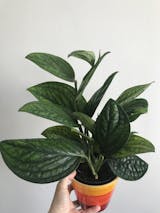Delivery to the address by courier
We ship live plant orders Monday through Thursday. If we are unable to prepare your order during these days, we will ship it again the following week. We want to avoid plants sitting in the warehouse for too long, which is especially important during the winter months when cold conditions can be detrimental to them.
Individual shipping prices:
1. DPD
The day before delivery, a DPD courier will contact you with the exact delivery date. If you would like to redirect the shipment to a pick-up point, you can arrange this directly with the carrier. However, we strongly recommend not redirecting to pick-up boxes during the winter months, as low temperatures can damage the plants. In such a case, we cannot be held responsible for the condition of the plants and no claims will be accepted.
The price of delivery of plants and accessories throughout the Czech Republic is 149 CZK, and to Slovakia it is 8 €.
2. Mail order company
You can have the selected goods delivered to a Zásilkovna pick-up point in the Czech Republic for 89 CZK or in Slovakia for 5 €. Simply select the "Zásilkovna" delivery option when ordering. After completing your order, you will be able to select a specific pick-up point using the map.
Please note that Zásilkovna has restrictions on the dimensions and weight of the package. If you do not see the Zásilkovna option, you probably have larger products in your cart and you need to choose another carrier. In the winter months, we strongly recommend not choosing delivery to Z-Boxes due to the risk of plants dying in frost. In such a case, we are not responsible for the condition of the plants and the claim will not be accepted.
3. Personal pickup
You can pick up your order in person for free at Křižíkova 55/65, Prague 8. Once your order is ready, we will send you an email with information about the possibility of picking it up. If you do not pick up your order within 3 business days , or do not inform us of a different pick-up date, it will be automatically canceled .
In the case of payment by cash on delivery, orders for collection boxes are automatically redirected to the nearest collection point.





